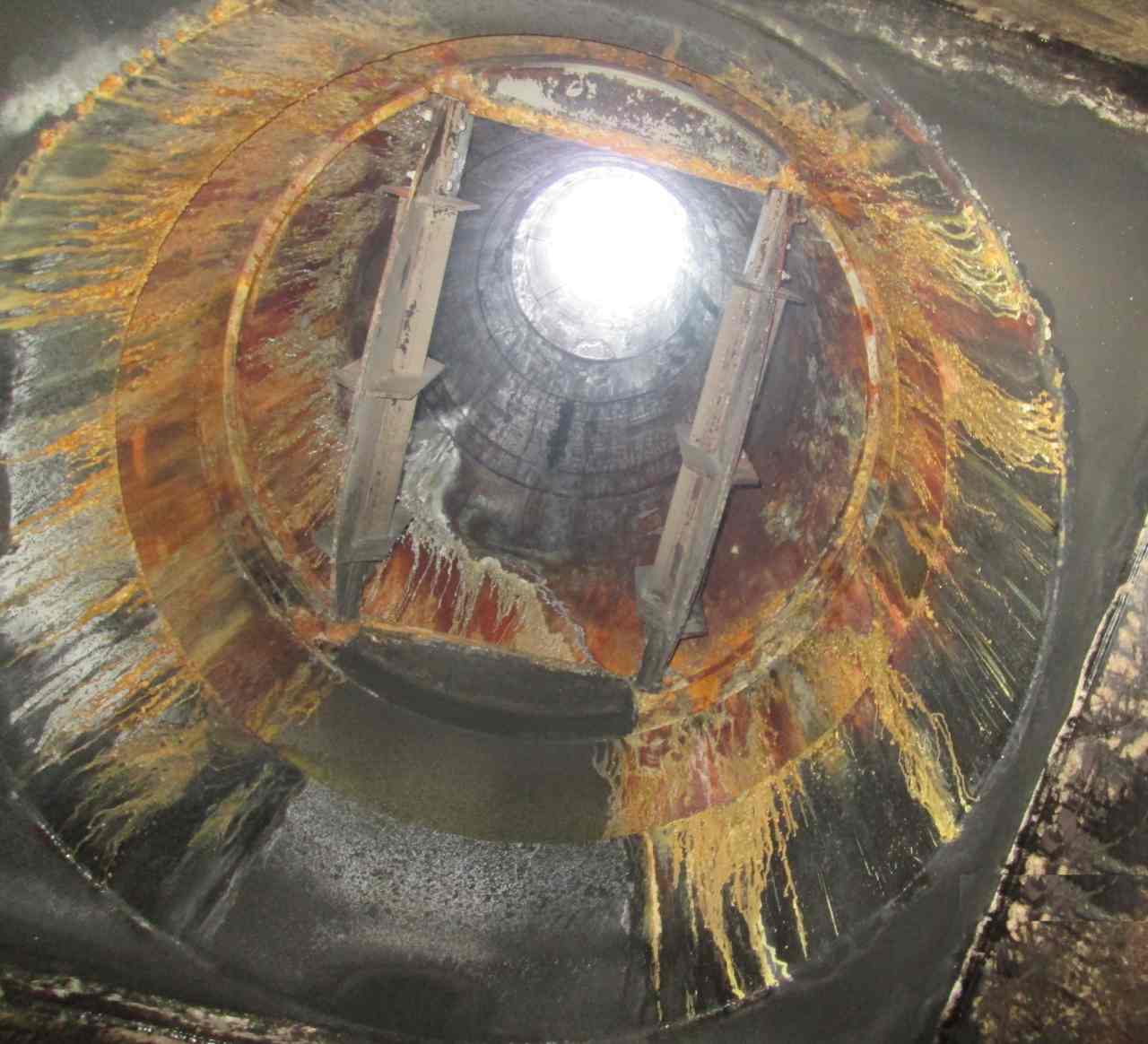Sulphur Dew-Point Corrosion
Introduction
The main purpose of material selection is to reduce the cost of the design while meeting the operation performance target. However, due to the transient nature of commissioning, field activities can be significantly aggressive, and under some circumstances, can even exceed the operation conditions of in-line equipment. For this reason, it is very important to perform a pre-analysis of the commissioning strategy and identify the equipment that is going to see critical conditions, so that the appropriate material can be specified in each case.
This photo was taken from the bottom of a diesel heater stack and illustrates the dramatic effects of acid dew point corrosion.
Problem
When sulfur-bearing fuel is burned in the combustion chamber, sulfur is converted to its dioxide (SO2) and trioxide (SO3) structure in the presence of other compounds such as CO2 and H2O.
Sulfur trioxide combines with water vapor to form gaseous sulfuric acid (H2SO4g). If temperature drops below the acid dew point, liquid sulfuric acid will form and spread all over the metal surfaces of the equipment. Initially, sulfuric condensate won’t attack carbon steel.
According to the equilibrium curve H2O – H2SO4, this acid condensate is highly concentrated and its combination with iron will form a protective salt layer of iron sulfate, which prevents the development of corrosion.
The real problem comes when flue gas temperature falls below the dew point of water and dilutes the concentration of sulfuric acid. Under this condition, the acid dissociation evolves toward the formation of protons and will corrode the metal within a few hours.
Solution
From the engineering & design standpoint, this problem could have been avoided if the chemical composition of the fuel had been analyzed and therefore, a more resistant material for the stack had been selected.


